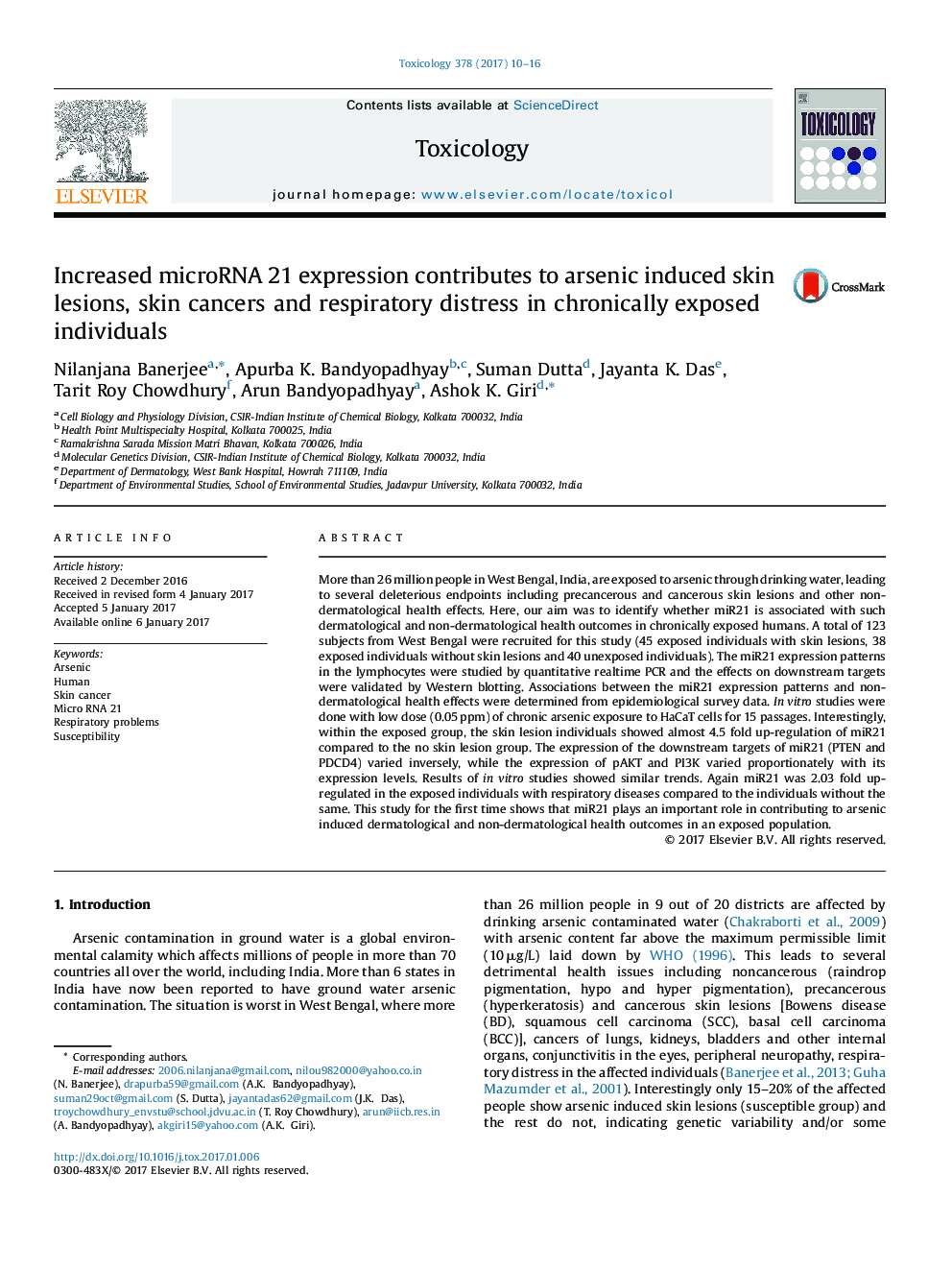| کد مقاله | کد نشریه | سال انتشار | مقاله انگلیسی | نسخه تمام متن |
|---|---|---|---|---|
| 5561861 | 1562294 | 2017 | 7 صفحه PDF | دانلود رایگان |

- Increased miR21 expression is found in humans with arsenic induced skin lesions.
- This in the former group render them more susceptible than the no skin lesion group.
- miR21 targets become down regulated, the survival PI3K-AKT pathway is activated.
- Results of the in vitro work validate the above findings.
- Increased miR21 expression is associated with respiratory problems.
More than 26 million people in West Bengal, India, are exposed to arsenic through drinking water, leading to several deleterious endpoints including precancerous and cancerous skin lesions and other non-dermatological health effects. Here, our aim was to identify whether miR21 is associated with such dermatological and non-dermatological health outcomes in chronically exposed humans. A total of 123 subjects from West Bengal were recruited for this study (45 exposed individuals with skin lesions, 38 exposed individuals without skin lesions and 40 unexposed individuals). The miR21 expression patterns in the lymphocytes were studied by quantitative realtime PCR and the effects on downstream targets were validated by Western blotting. Associations between the miR21 expression patterns and non-dermatological health effects were determined from epidemiological survey data. In vitro studies were done with low dose (0.05Â ppm) of chronic arsenic exposure to HaCaT cells for 15 passages. Interestingly, within the exposed group, the skin lesion individuals showed almost 4.5 fold up-regulation of miR21 compared to the no skin lesion group. The expression of the downstream targets of miR21 (PTEN and PDCD4) varied inversely, while the expression of pAKT and PI3K varied proportionately with its expression levels. Results of in vitro studies showed similar trends. Again miR21 was 2.03 fold up-regulated in the exposed individuals with respiratory diseases compared to the individuals without the same. This study for the first time shows that miR21 plays an important role in contributing to arsenic induced dermatological and non-dermatological health outcomes in an exposed population.
150
Journal: Toxicology - Volume 378, 1 March 2017, Pages 10-16